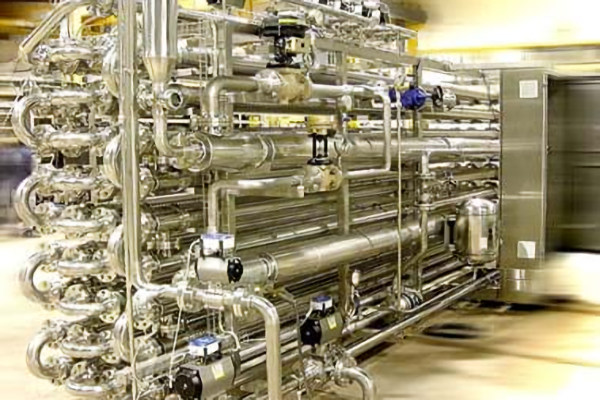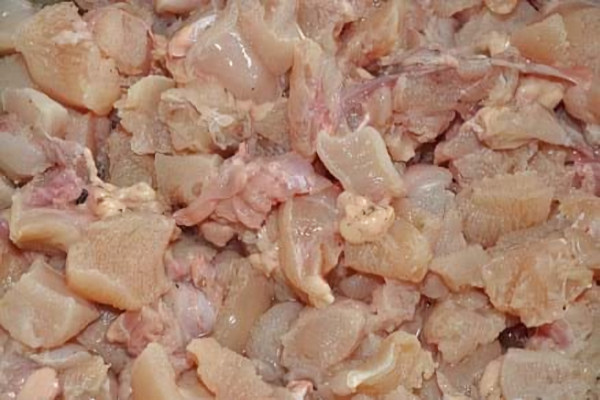Poultry Abattoir Waste
Abattoir Waste
Poultry Abbattoir Waste re-evaluation
The Issue
A local council had directed a large commercial laundry to reduce the temperature of its waste water stream before discharge into the sewer.
After processing, the waste water was being released into the sewer at a temperature too high to be safe, promoting the growth of harmful bacteria in the sewer and posing a public health hazard.
The laundry approached Fluid Dynamics for assistance to cool the waste water stream before discharge.
A poultry abattoir required a re-evaluation of their waste process.
The abattoir mainly processed chicken meat which they package for human consumption. The process is completely automated. The factory employs about 200 people and processes between 65,000 and 125,000 chickens per day.
THE PROBLEM
The problem centered on what to do with the high amount of animal waste generated by the process and a re-evaluation was required. The abattoir opted to process the waste by crushing and cooling it for eventual sale as pet food.
This process not only solved their animal waste issue but also provided a value-add solution with an economic return.
PROCESS
The processing plant was initially designed to cool 1,800 kg/h of minced poultry waste (this capacity was subsequently increased to 5,000 kg/h) for its transformation into a product which was suitable for consumption by other animals.
The cooling process is a critical step to preserve the features of the animal waste and ensures the preservation of the product in optimal conditions for transportation to the abattoir’s facilities. The waste was taken from 30°C and cooled to 5/10°C for storage and subsequent refrigerated transport.
The abattoir also requested a skid mounted CIP system to provide the automated cleaning of the product line and other components.
PRODUCT SPECIFICATION
The particular product in this case study was a heterogeneous mixture of waste (composed of viscera, heads, feet, wings and bones) from poultry meat.
For the correct thermal design of the plant, the proper determination of the product’s physical properties is essential: density, specific heat, thermal conductivity and viscosity.
To ascertain these properties (mainly viscosity-temperature curves) several pumping tests were carried out in an existing installation in the abattoir’s facilities.
Based on these tests, the product’s physical properties were understood and agreed with the abattoir and then compared to a large database of physical properties for different types of meat waste ensuring the optimal thermal design of processing plants.
The Solution
A complete “turnkey” system was provided with its scope including:
- Thermal treating section for cooling by means of tubular heat exchangers
- Flanged and automated product side valves
- Skid mounted CIP system
- Regulation & control using automation
- Start-up carried out with the plant in operation
- On site training for correct handling of the installation
ESIGN OF TUBULAR HEAT EXCHANGER
The CT-20 model was used for this project. Its features include:
Monotubular geometry
The CT-20 model consists of 2 concentric tubes. Waste flows through the inner corrugated tube and the refrigerant flows through the outer annular space. This design removes the risk of blockage of the heat exchangers that can be caused by the presence of the large particulate solids content in the product.
Optimal solution
The design was a solution involving increased diameter to prevent blockages, processing the meat at an acceptable velocity to enhance the thermal exchange and to keeping the pressure drop within reasonable values.
Modular design
Flanged connections were chosen to enable the dismantling of the units for easy maintenance and cleaning and the use of modules to enable the duty to be increased if required.
Pump unit
Meat wastes are very viscous and the pressure drop in the inner tube can be quite high. An accurate determination of pressure drop allows a correct selection for the pump and the design pressure. A positive displacement pump was chosen in this instance.
Process duty
The system supplied was capable of being adapted to variable capacities by means of a pump with a frequency converter allowing the system to run with variable process flow rates between 1,800 kg/h and 5,000 kg/h.
Corrugation
The inner tubes were SOFT corrugated to increase the turbulence of the product without significantly increasing the pressure drop.
Key Figures:
| Production capacity: | 65,000 – 125,000 chickens/day |
| Process flow rate of the system: | 1,800 – 5,000 kg/h |
| Cooling temperature: | 5°C / 10°C |
| Design pressure product side: | 40 bar |
| Thermal duty: | 150,000 kcal/h |
| Floor space: | 1.9m x 6.2m x 2m |



